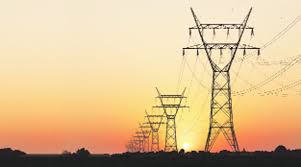Bhubaneswar: The Covid-19 pandemic has short circuited Odisha’s power sector. The shutdown and lockdown has led to slide in demand for power consumption and lower power generation during the first quarter of 2020-21 ending in June 2020. The pandemic has also put utility companies like distribution companies (Discoms) and bulk supplier Gridco.
This was revealed at a high level review held under the Odisha chief secretary Asit Tripathy, here on Monday.
Review shows, Covid-19 has impacted the power sector adversely. Because of the shutdown and lockdowns, the power demand has reduced by 14% during the period from March-June 2020 in comparison to the previous year. The captive generation and consumption has also reduced by 25% in April, 12% in May and 2% in June. Because of the reduction in demand, the revenue gap of Gridco has widened, as it has to pay the fixed charges to power generating plants as per power purchase agreement.
The meeting decided to extend necessary financial guarantee support to Gridco as power is a critical basic need.
The chief secretary directed the OPTCL, Gridco and Discoms to make the power sector self sustaining through aggressive system reform and reduction in aggregate t
echnical & commercial (AT&C) loss.
Further, chief secretary directed OPTCL and DISCOMs to improve quality and reliability of power supply by optimizing the use of the existing network.
Chief secretary directed to optimize the use of existing networks, increase metering, billing and collection efficiency. DISCOMs were directed to achieve at least 98% of the billing and collection capacity during this year. Chief Secretary directed to focus on reduction of AT& C loss, as reduction of 1% AT&C loss leads to around Rs.130 cr of revenue gain. OPTCL and GRIDCO were asked to reduce their operation cost through adoption of innovative techno based approaches.
He directed the department of Industry to motivate the industrial units to procure power from Gridco.
Outlining the Covid impact and current challenges, principal secretary energy Nikunjabihari Dhal presented the framework for ‘way ahead’.
He appraised, “The installed power generation capacity of Odisha is around 7.15 GW including 2.13 GW from hydro, 4.36 GW from thermal and 0.66 GW from renewable sources. Besides, various industrial houses have also installed captive plants with capacity of around 9.85 GW.”
Dhal added, “With continued government support, the power infrastructure has been enhanced substantially over the years. The EHT line has been increased from 8,267 circuit Kms in the year 2000 to 14,373 circuit Kms in 2020. During the same time the number of EHT GRID substations and 33/11 KV substations have been increased from 61 to 156 and 550 to 919 respectively. The HT line has been extended from 60,100 kms to 1,58,445 kms; and, the LT line has been increased from 54,160 kms to 1,84,010 kms during the same period”.
Principal secretary and CMD Gridco Saurabh Garg said, “Presently the outreach of power distribution has been extended to 89 lakh consumers in current year against 16 lakh consumers in the year 2000. The percentage of AT & C loss has been reduced from 57% to around 29.94% during the period. The State has power surplus of around 1000 MW per year”.
Director finance Gridco Gagan Swain appraised, “The current power tariff of Odisha for agriculture, domestic industrial and commercial use is lower than many states like Andhra Pradesh, Bihar, Karnataka, Jharkhand, Madhya Pradesh, West Bengal, Uttar Pradesh and others. Currently, power supply in Odisha is subsidized for domestic and agricultural use.
Development commissioner Suresh Chandra Mohapatra advised the department to redesign its investment in renewable power sector keeping in view the low cost availability of renewable energy from interstate market.
MD OPTCL Sanjeev Singh along with other senior officers from concerned departments participated in the deliberations.






